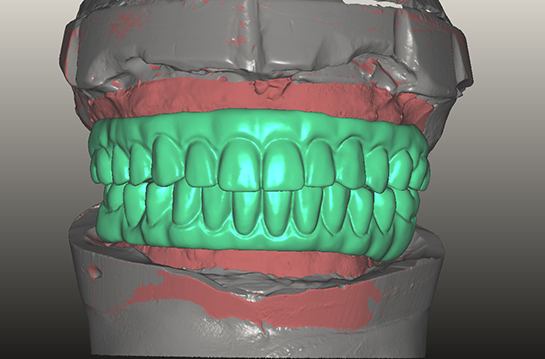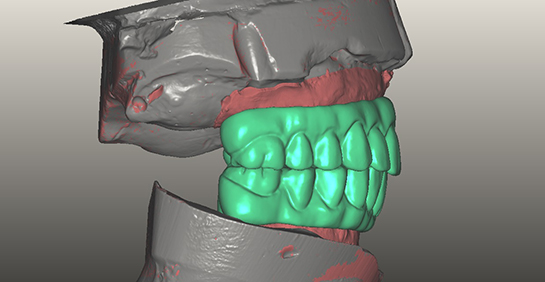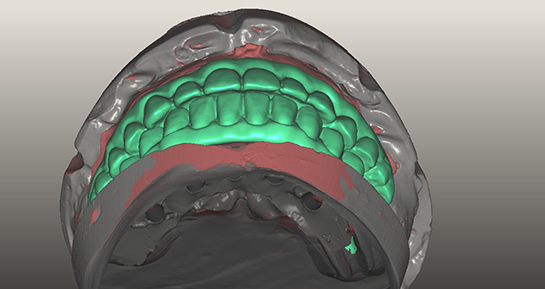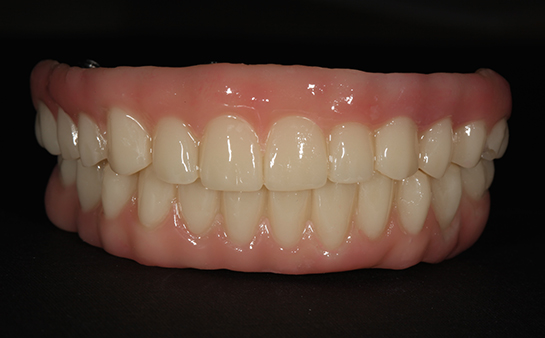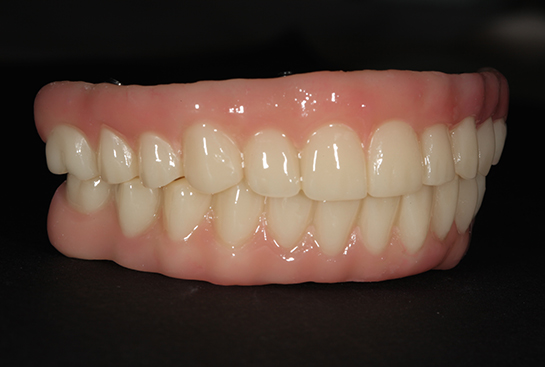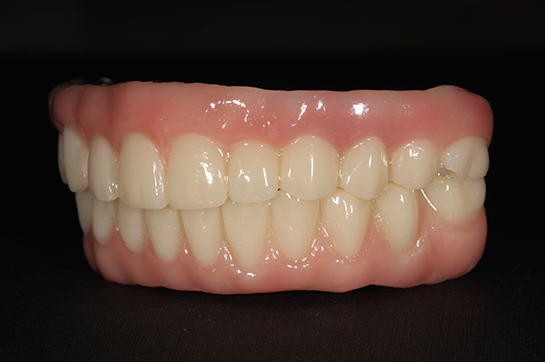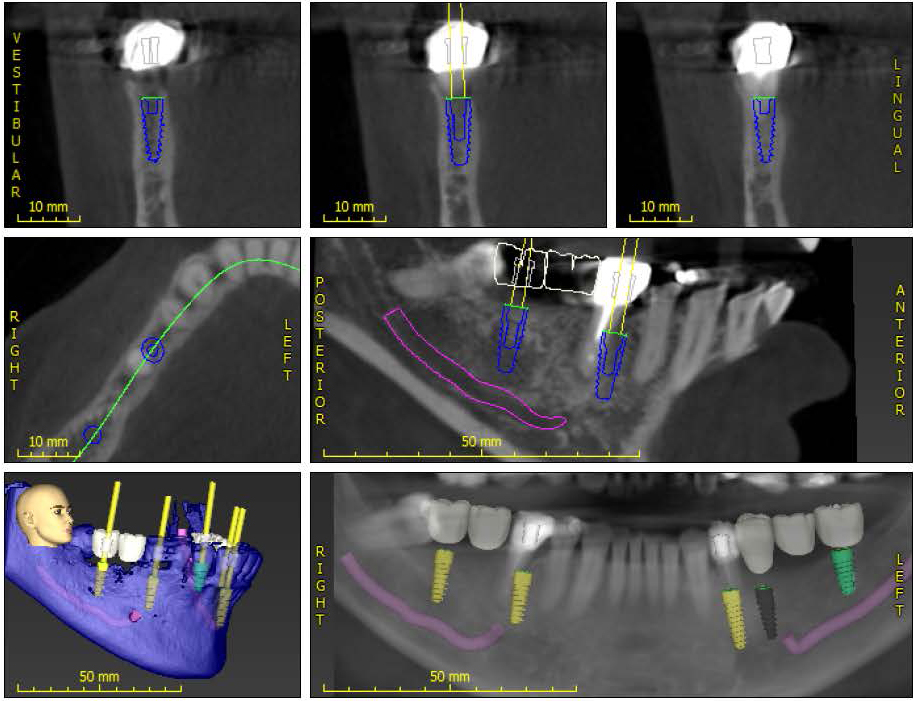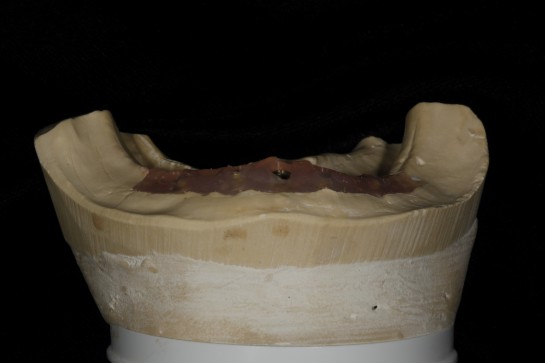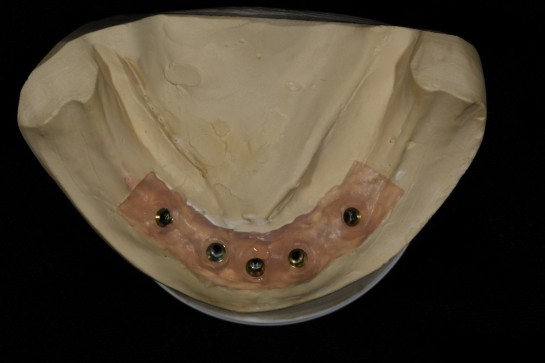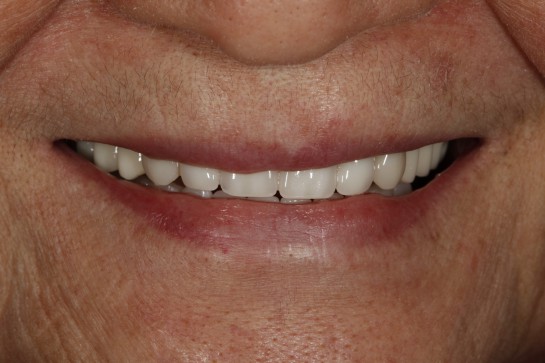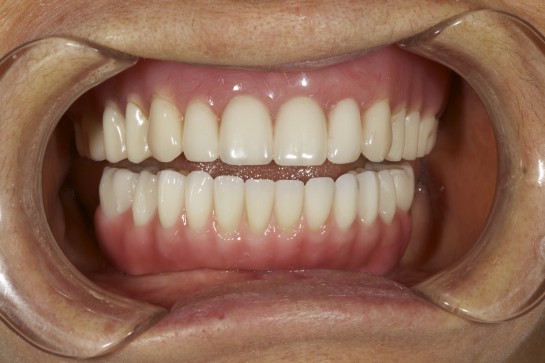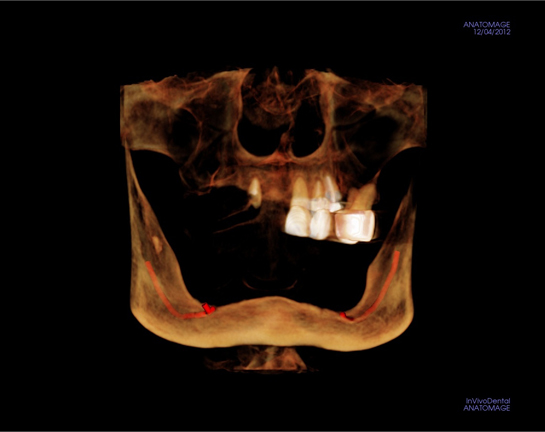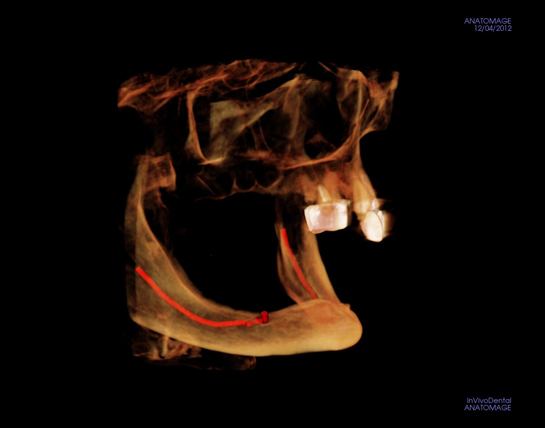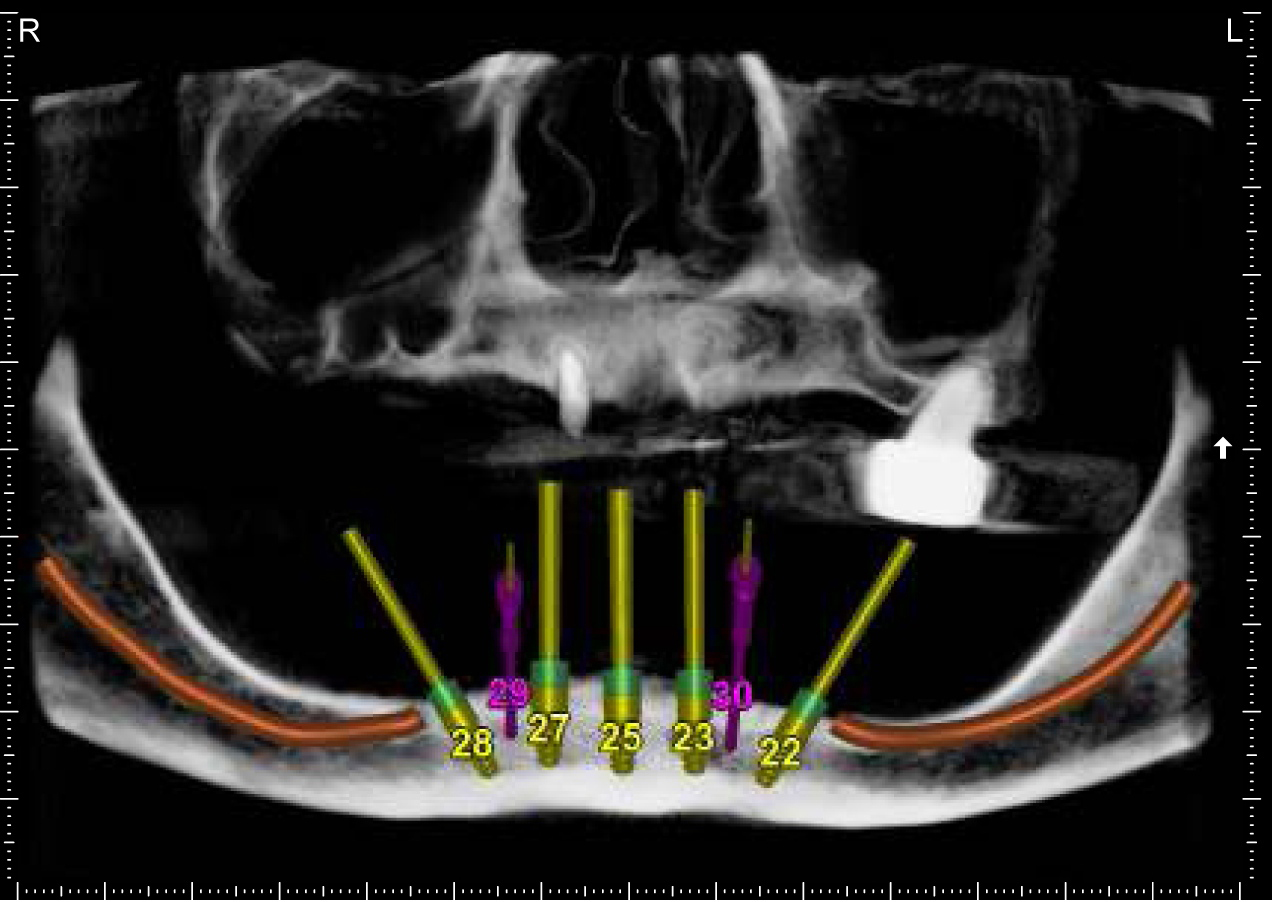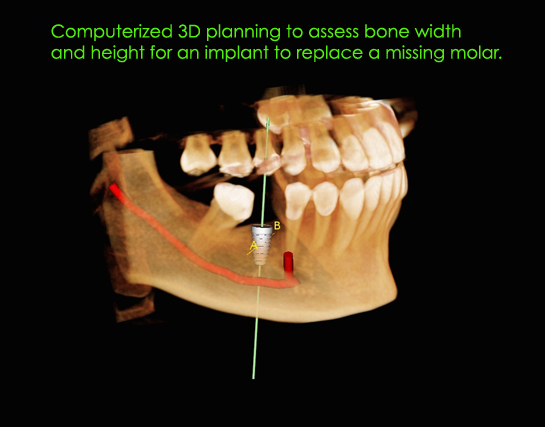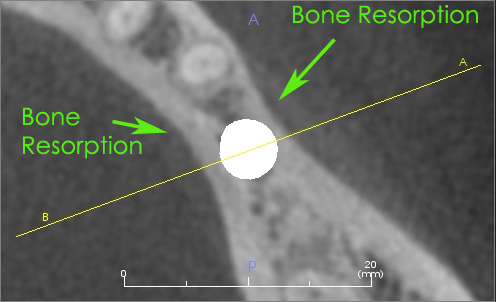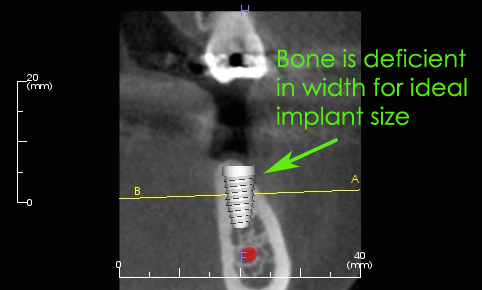Digital Dentistry is here for many different types of dental prosthesis. In this case we were able to convert an optical scan of the models of a denture-type prosthesis into 3D Digital images. From there we modified the position of the teeth to enhance both the esthetic and functional components before milling out individual acrylic temporary prosthesis which fit precisely in the patient's mouth. The prosthesis in this case will actually be held in place by dental implants in both the upper and lower arches.
By doing the refinement work digitally, we can eliminate extra appointments time required to perfect the result of all types of prosthesis.
The images below came from an actual case which we will deliver to our patient next week. If you have the need for these types of implant retained prosthesis please contact our office for further information on treatment options.

